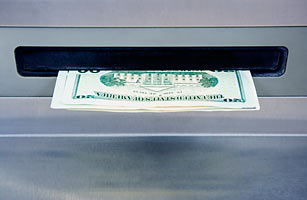
No matter how much money you have tucked away in an IRA or 401(k), research shows that withdrawing 4% your first year of retirement and then boosting that withdrawal amount by 3% each subsequent year to account for inflation will let you maintain your purchasing power with a strong likelihood (about 90%) of not running out of money in less than 30 years. Let's say you have $500,000. In year one you'll withdraw $20,000, in year two you'll withdraw $20,600, in year three you'll withdraw $21,218 and so on. At that pace your nest egg should last 30 years and possibly much longer. This is true for just about any diversified portfolio. "We've found that your ability to avoid running out of money in retirement is driven more by your initial withdrawal amount than your asset-allocation strategy," says Christine Fahlund, senior financial planner at fund company T. Rowe Price. For example, in thousands of simulations (known as a Monte Carlo analysis), a stock/bond mix of 80/20, 60/40, 40/60 or 20/80 all leave you with money in the bank after 30 years 84% to 89% of the time. But if you start by withdrawing 5% of assets, you'll run out of money 40% to 65% of the time, and if you start by withdrawing 6%, the success rate plummets to 7% to 45%.
See more about how much money you can withdraw each year:
Introduction: How to Spend and Invest
Get Real About How Long You'll Live
Don't Lose Faith in Stocks
Take These Steps to Improve Your Nest Egg